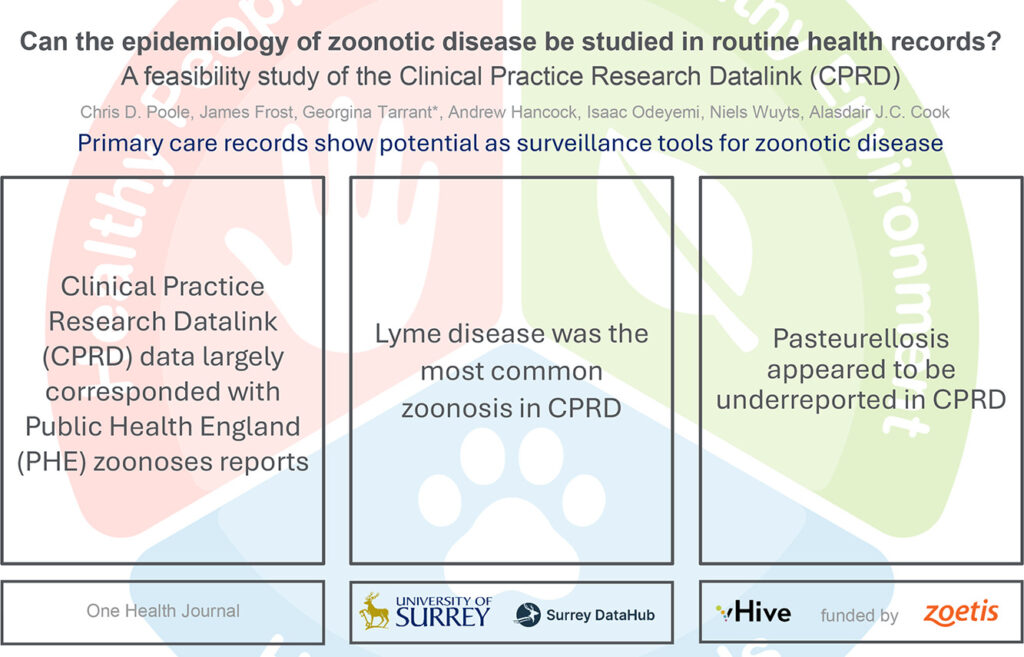Can Routine Health Records Be Used to Track Zoonotic Diseases? Our New Study Explores the Potential

Our latest research, published in Science Direct: One Health is a feasibility study explores whether routinely collected health data from general practice can be used to monitor and understand the spread of zoonotic diseases in the UK population.
The short answer? It’s promising, but not without limitations.
What We Set Out to Explore
Zoonotic diseases — infections that pass between animals and humans — are a growing public health concern. Effective monitoring is key to identifying outbreaks early and understanding long-term patterns. But current surveillance systems rely on formal reporting, which can miss cases or vary in coverage over time.
Our study, conducted in collaboration with the University of Surrey and funded by Zoetis, investigated whether the Clinical Practice Research Datalink (CPRD) — a large, anonymised dataset of UK general practice records — could be a useful resource for tracking zoonotic infections in humans.
We focused on ten notifiable zoonotic diseases, including Lyme disease, psittacosis, leptospirosis, pasteurellosis, and toxoplasmosis, across a ten-year period (2009 to 2019). We then compared this data with figures from Public Health England (PHE), now part of the UK Health Security Agency.
What We Found
Across the decade, CPRD captured 10,441 new cases of the selected zoonoses, compared with 32,167 cases reported by PHE. While absolute case counts were lower in CPRD, the temporal trends largely aligned. The correlation between CPRD and PHE data was statistically significant, with an R² of 0.571.
For some diseases, like Lyme disease, CPRD data tracked closely with national surveillance. But for others, including pasteurellosis, CPRD significantly underreported cases — likely because diagnoses were made outside of general practice settings or inconsistently coded in health records.
These findings suggest that CPRD can provide valuable insight into the incidence of zoonotic diseases, especially when triangulated with other data sources. But the study also highlights important gaps — in both clinical recording practices and data linkage between human and animal health systems.
Why This Matters
This work sits at the intersection of human health, animal health, and data science — an area often referred to as the One Health approach. As climate change, land use, and antimicrobial resistance continue to shift the landscape of zoonotic risk, real-world data offers a scalable, cost-effective tool for early detection and policy planning.
For Zoetis and other animal health stakeholders, this research underscores the need for better integration between companion animal and livestock health records and human health surveillance. Doing so could enhance our collective ability to respond to emerging threats and understand cross-species transmission in real-world settings.
Our Role and What’s Next
At Surrey DataHub, we’re committed to exploring how data (whether from GPs, vets, or owners) can help us understand patterns of health and disease that traditional studies miss. This work adds to our growing body of research on real-world health data, following recent publications on companion animal medication adherence and social media-based insights.
This study demonstrates that existing GP records, when combined with public health data and improved coding practices, have strong potential to support the national monitoring of zoonotic disease.
But we believe the next step is clear. Connecting animal and human health records is not just a technical challenge, it’s a public health priority.
You can read the full open-access article on ScienceDirect.